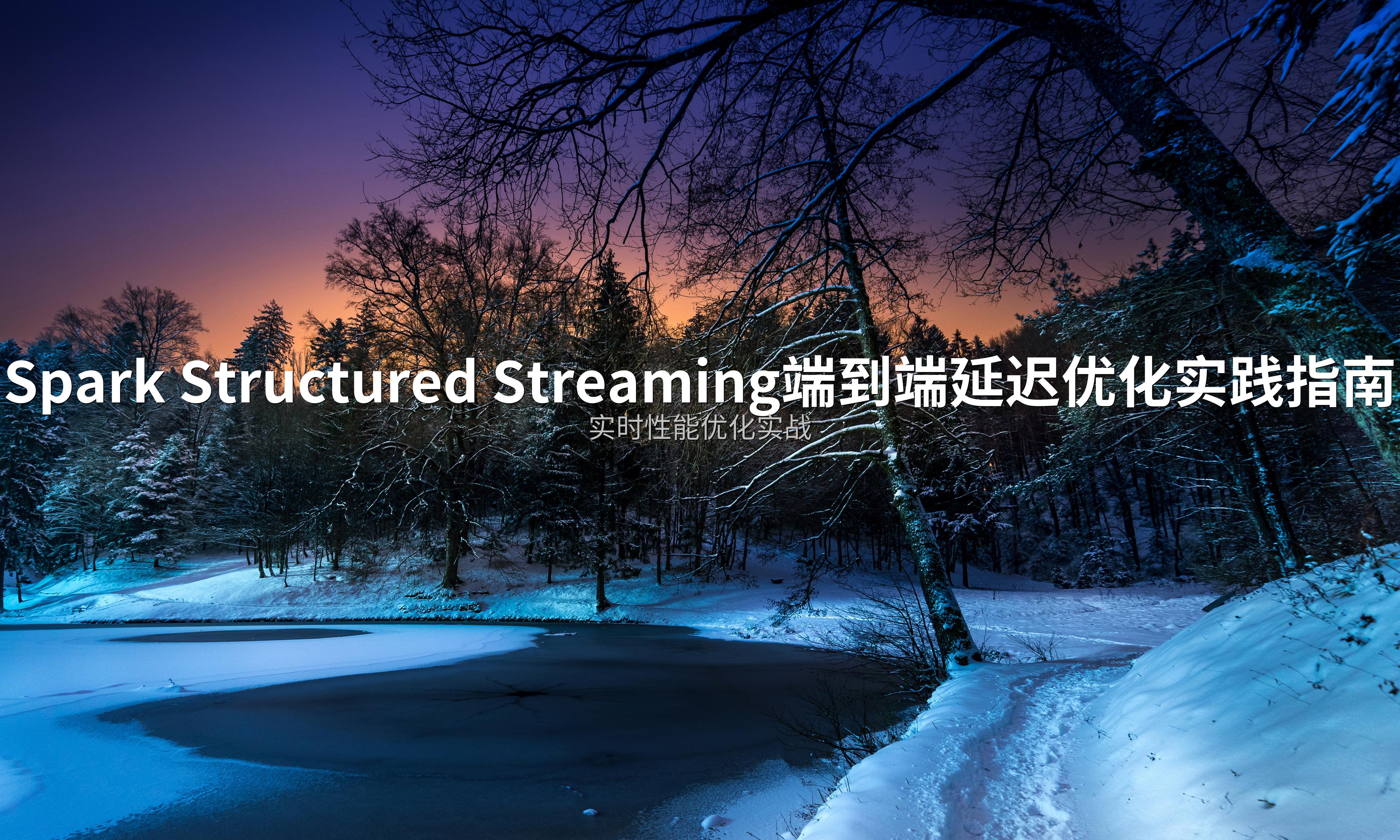Spark Structured Streaming端到端延迟优化实践指南

Spark Structured Streaming端到端延迟优化实践指南
1 业务场景描述
在金融交易、在线广告投放或物联网数据采集等实时场景中,数据从源(Kafka、Socket、文件系统等)采集、计算到结果写出,全流程端到端延迟需控制在1秒以内。实践中,我们发现Spark Structured Streaming在大规模、高吞吐量情况下,默认微批处理和Shuffle阶段会带来较高延迟。本指南结合真实生产环境,围绕微批间隔、调度流程、Shuffle优化、状态管理等方面,详解端到端延迟优化方案,并提供可运行的代码示例和集群配置建议。
2 技术选型过程
Spark Structured Streaming作为Spark 2.x之后推荐的统一流批处理框架,具有以下优势:
- 统一API:对批处理和流处理使用相同的DataFrame/Dataset API,学习成本低;
- 端到端Exactly-Once语义:依靠Checkpoint和Write-Ahead Logs实现精确一次处理;
- 灵活触发模式:支持微批(ProcessingTime)和连续处理(Continuous)模式;
- 深度集成Spark生态:与MLlib、GraphX、Spark SQL无缝衔接。
在延迟要求严格的场景下,我们比较了微批与Continuous Processing模式:
| 模式 | 优点 | 缺点 | | ---------------- | ---------------------------- | ------------------------------- | | 微批(1s~5s) | 简单稳定,易调度; | 触发延迟=批次间隔; | | Continuous(实验性) | <100ms 处理延迟; | 社区支持弱,仅限Java/Scala; |
结合团队对Scala的掌握程度和社区稳定性,决定优先采用微批模式,并通过调优批次间隔、调度线程、Shuffle和状态管理等机制,降低端到端延迟。
3 实现方案详解
3.1 核心配置与项目结构
项目示例结构:
streaming-latency-optimize/
├── Dockerfile
├── conf/
│ └── spark-defaults.conf
└── src/main/scala/com/example/StreamingLatencyOptimization.scala
conf/spark-defaults.conf:
spark.master spark://spark-master:7077
spark.app.name latency-optimize
spark.sql.shuffle.partitions 200
spark.dynamicAllocation.enabled true
spark.dynamicAllocation.minExecutors 2
spark.dynamicAllocation.maxExecutors 10
spark.network.timeout 120s
spark.streaming.backpressure.enabled true
spark.streaming.kafka.maxRatePerPartition 10000
3.2 核心代码示例
package com.exampleimport org.apache.spark.sql.SparkSession
import org.apache.spark.sql.streaming.Triggerobject StreamingLatencyOptimization {def main(args: Array[String]): Unit = {// 构造SparkSessionval spark = SparkSession.builder().config("spark.sql.shuffle.partitions", "200").config("spark.dynamicAllocation.enabled", "true").config("spark.dynamicAllocation.minExecutors", "2").config("spark.dynamicAllocation.maxExecutors", "10").getOrCreate()import spark.implicits._// 从Kafka读取流val kafkaDF = spark.readStream.format("kafka").option("kafka.bootstrap.servers", "kafka1:9092,kafka2:9092").option("subscribe", "topic_orders").option("startingOffsets", "latest").load()// 简单解析并聚合val events = kafkaDF.selectExpr("CAST(value AS STRING) as json").selectExpr("json_tuple(json, 'orderId','userId','amount','timestamp') as (orderId,userId,amount,timestamp)").withColumn("eventTime", $